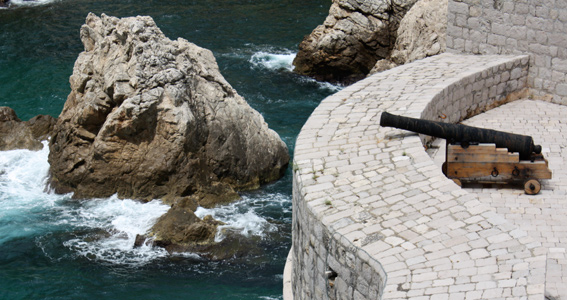Region of Conflict

The Balkans is the most recent European area to shed—literally and painfully—the legacy of the Second World War, but this region is also the most ancient. Three empires coincide in it (the Ottoman, the Italian, the Austro-Hungarian), not to mention the power grabs by 20th Century tyrannies. Three religions uneasily make their home there… Everywhere one turns, history speaks.
—Caryl Emerson, Princeton University (A. Watson Armour III University Professor of Slavic Languages and Literatures)
This program will focus on the region of the Balkans that encompasses states inhabited primarily by the South Slavic people. Although many areas have recovered from the wars that took place in the 1990s, the people throughout the region are struggling to find a way forward and to learn how to live among neighbors whom until recently were enemies.
The very name Balkans evokes the notion of war, conflict and division. Indeed, for centuries the Balkans have been the site in which western and eastern forces such as the Austro-Hungarian and Ottoman Empires fought for dominance and expansion. WWI famously started in Sarajevo with the assassination of Archduke Ferdinand. But the Balkans is also one of the most ethnically and religiously diverse regions of Europe. It is here that the questions of being at peace or at war with those other than oneself—ethnically, religiously, culturally—are ever present and where stories of success and failure are played out as a serious drama with life or death consequences.
The most recent conflicts in the Balkans started in the 1990's when two of the Republics within the Federative Republic of Yugoslavia, Croatia and Slovenia, decided to cede. The regime in Belgrade (then the capital of both Yugoslavia and Serbia), with Slobodan Milosevic at the helm, was opposed to secession and used the Yugoslav army to gain control over portions of Croatia. From here the war spread to another of the Yugoslav republics—Bosnia and Herzegovina, where it raged until December of 1995. The war in Bosnia produced the worst crimes on European soil since WWII, including the genocide of Srebrenica and the four-year Siege of Sarajevo. Prior to the war, Bosnia was a multiethnic state with three major ethnicities: Moslem Bosniaks (44%), Orthodox Serbs (31%) and Catholic Croats (17%). All three sides were in conflict at different points throughout the four years of fighting, and this is reflected in the current struggles for peace.

 Location in the Balkans
Location in the Balkans Region of Conflict
Region of Conflict


